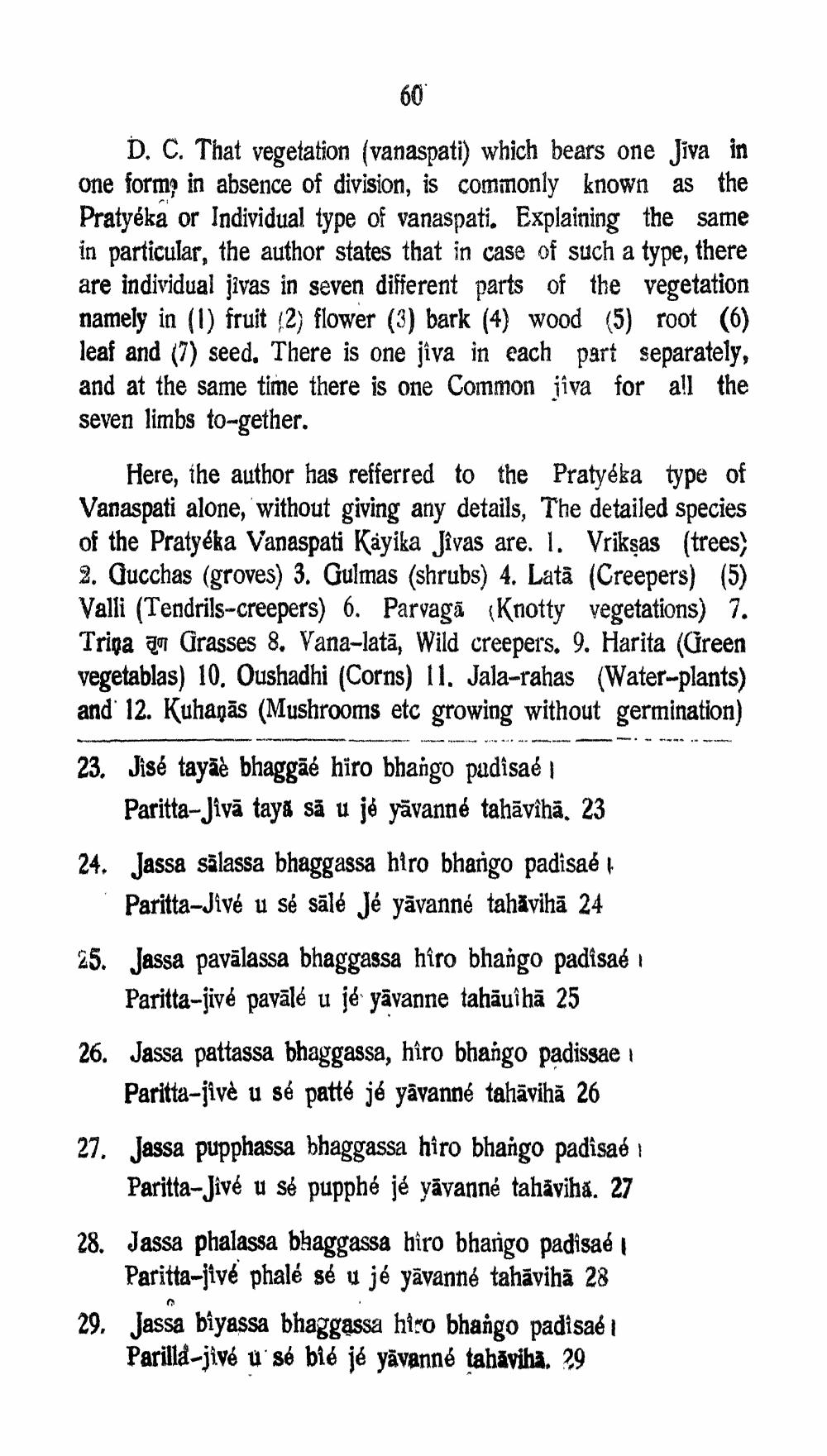________________
D. C. That vegetation (vanaspati) which bears one Jiva in one forma in absence of division, is commonly known as the Pratyéka or Individual type of vanaspati. Explaining the same in particular, the author states that in case of such a type, there are individual jivas in seven different parts of the vegetation namely in (1) fruit 2) flower (3) bark (4) wood (5) root (6) leaf and (7) seed. There is one jiva in each part separately, and at the same time there is one Common jiva for all the seven limbs to-gether.
Here, the author has refferred to the Pratyéka type of Vanaspati alone, without giving any details, The detailed species of the Pratyéka Vanaspati Kayika Jivas are. 1. Vriksas (trees) 2. Gucchas (groves) 3. Gulmas (shrubs) 4. Latā (Creepers) (5) Valli (Tendrils-creepers) 6. Parvagā (Knotty vegetations) 7. Triga qo Grasses 8. Vana-latā, Wild creepers. 9. Harita (Green vegetablas) 10. Oushadhi (Corns) 11. Jala-rahas (Water-plants) and 12. Kuhaņās (Mushrooms etc growing without germination) 23. Jisé tayāè bhaggāé hiro bhango padisaé i
Paritta- Jivā taya să u jé yāvanné tahāvinā. 23 24. Jassa sālassa bhaggassa hiro bharigo padisae 1
Paritta-Jivé u sé sālé Jé yāvanné tahävihā 24
25. Jassa pavālassa bhaggassa hîro bhango padisaé i
Paritta-jivé pavālé u jé' yāvanne tahāuihā 25 26. Jassa pattassa bhaggassa, hîro bhango padissae 1
Paritta–jive u sé patté jé yāvanné tahāvihā 26 27. Jassa pupphassa bhaggassa hiro bhango padisae 1
Paritta- Jivé u sé pupphé jé yāyanné tahāviha. 27 28. Jassa phalassa bhaggassa hiro bharigo padisaél
Paritta-jivé phalé sé u jé yāvanne tahāvinā 28 29. Jassa biyassa bhaggassa hiro bhango padisad 1
Parilla–jivé u sé blé jé yävänné tahaviha. 29




